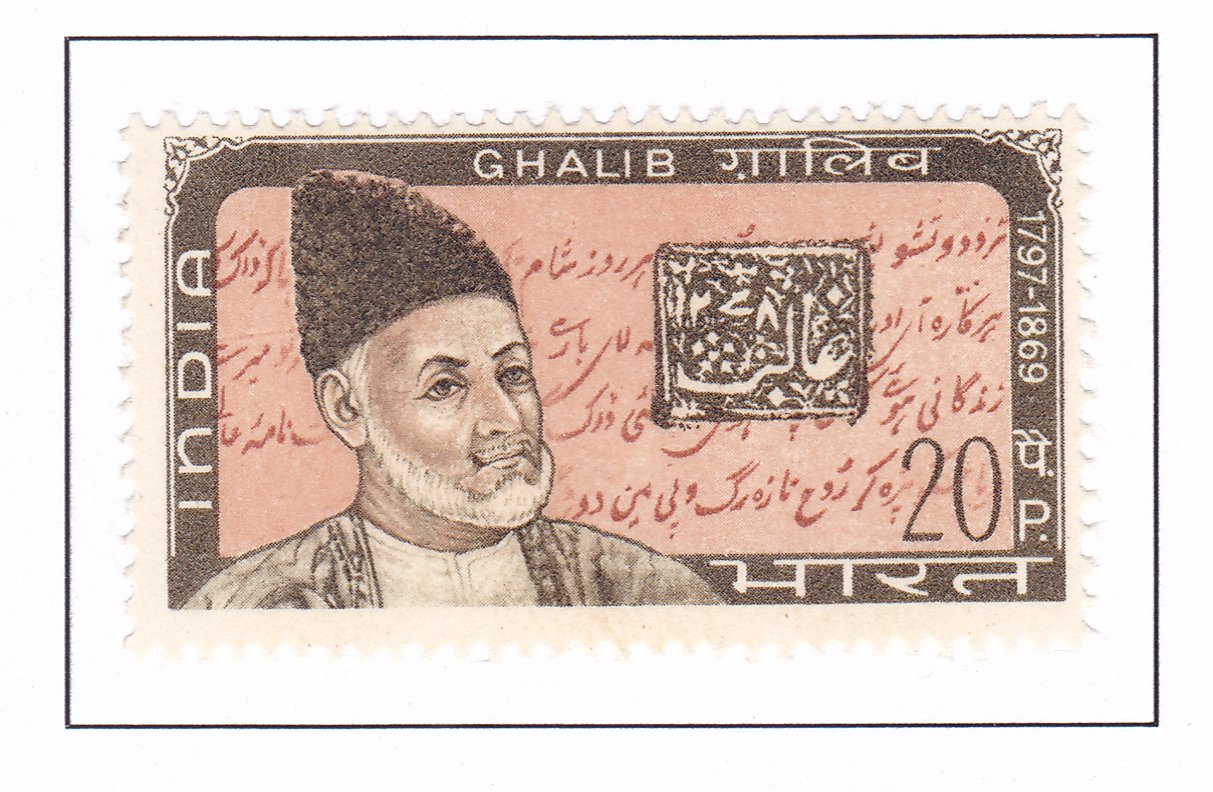Mirza Ghalib

Technical Data
| Date of Issue | February 17, 1969 |
|---|---|
| Denomination | 20 nP |
| Quantity | 3,000,000 |
| Perforation | comb 14¾ x 14¼ |
| Printer | Security Printing Press, Nashik |
| Watermark | No Watermark |
| Colors | Multicolor |
| Catalog Codes |
Michel IN 471 Stamp Number IN 487 Colnect codes IN 269 Colnect codes IN 585 |
| Themes | Anniversaries and Jubilees | Authors | Famous people | Headgear | Literary People (Poets and Writers) | Literature | Men |
Mirza Ghalib, born Asad Ullah Beg Khan on December 27, 1797, in Agra, faced early tragedy with the loss of his father at age five and his uncle at age nine. Raised by an uncle thereafter, he received a small pension to sustain himself and his younger brother. Ghalib was married at a young age, and his father-in-law, Mirza Ilahi Buksh, was a renowned poet in Delhi, exposing Ghalib to literary circles from an early age. This marriage led Ghalib to settle in Delhi permanently.
Living a life of luxury in Delhi, Ghalib dedicated much of his leisure time to reading and writing Persian and Urdu poetry. A significant event in his life was a journey to Calcutta between 1826 and 1829, undertaken in hopes of securing a larger share of his inheritance, although it ended in disappointment. However, the journey exposed him to literary trends in Lucknow, Varanasi, and Calcutta, enriching his poetic perspective.
Upon his return to Delhi, Ghalib experienced a surge in literary activity, leading to the publication of his collection of Urdu poems, “Diwan-E-Ghalib,” in 1841. He also published “Panj Ahang,” a substantial Persian work, in 1849. The years that followed coincided with the tumultuous period of the First War of Independence in 1857, during which Ghalib had developed a close association with Bahadur Shah Zafar, the last Mughal Emperor, and had been appointed as the court historian. However, this association led to suspicion from the British authorities upon their return to Delhi after the uprising.
Ghalib documented the conditions in Delhi during that time in his Persian work, “Dastan bu.” Despite the challenges he faced, Ghalib’s literary legacy endures, with his poetry recognized as a pinnacle of Urdu and Persian literature, reflecting the complexities of life, love, and human emotions.
